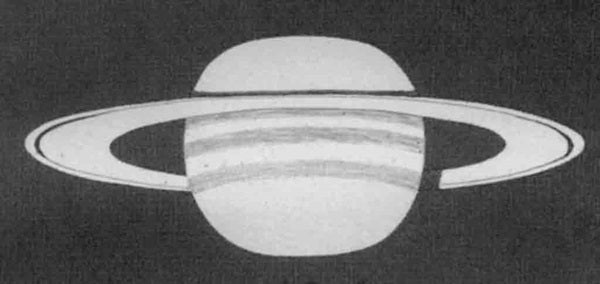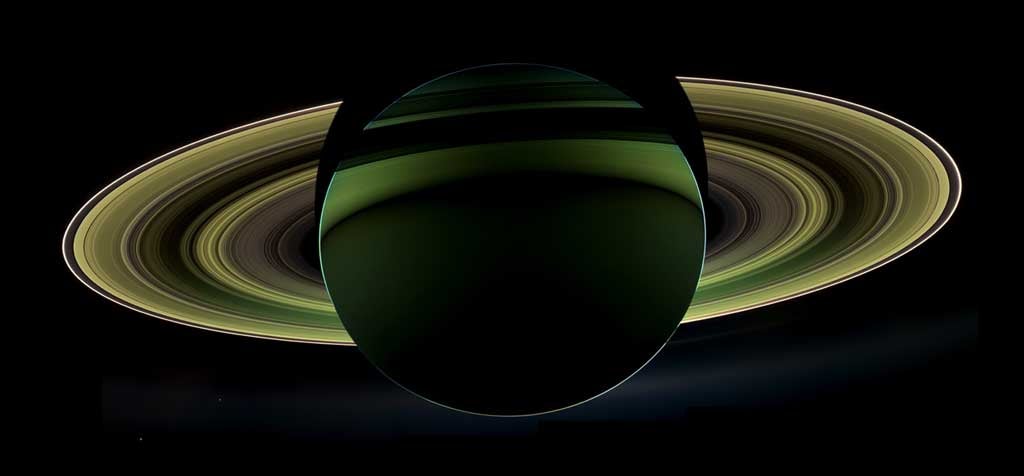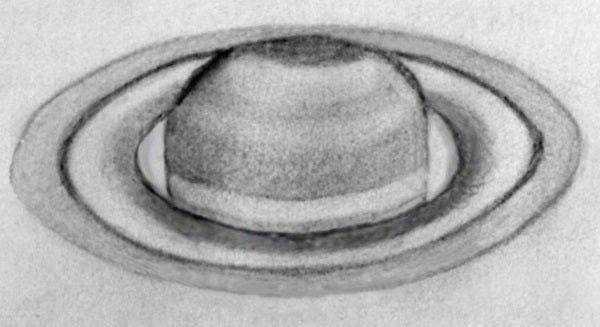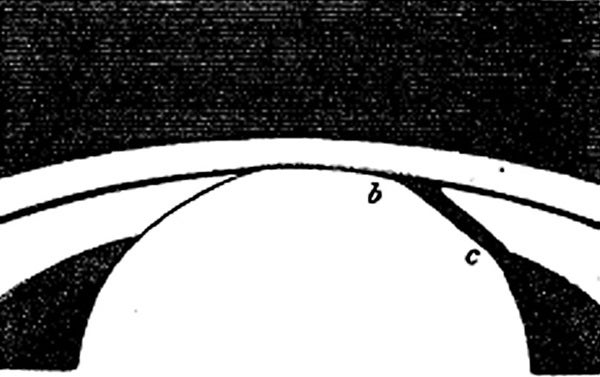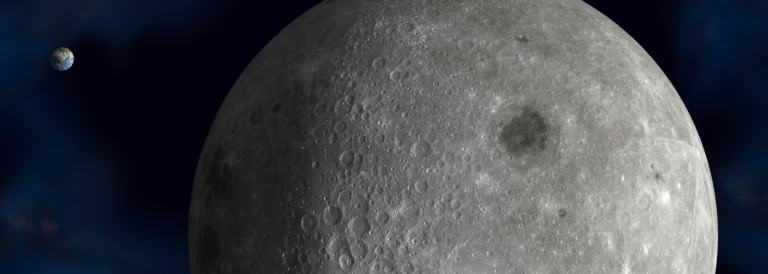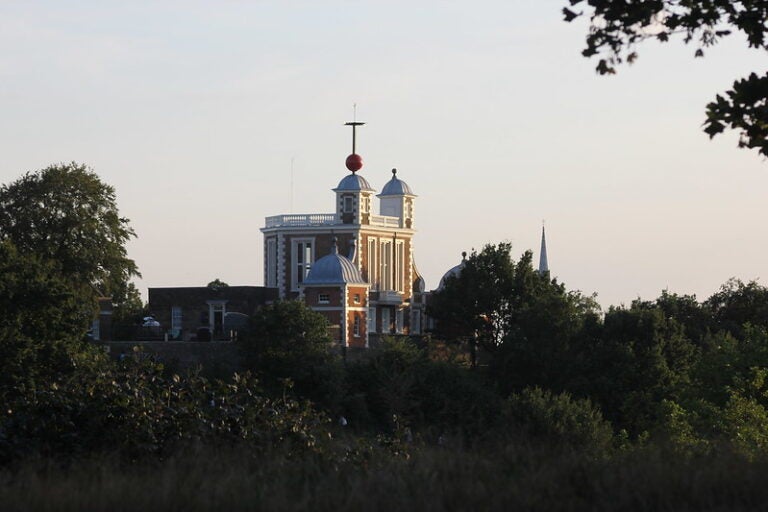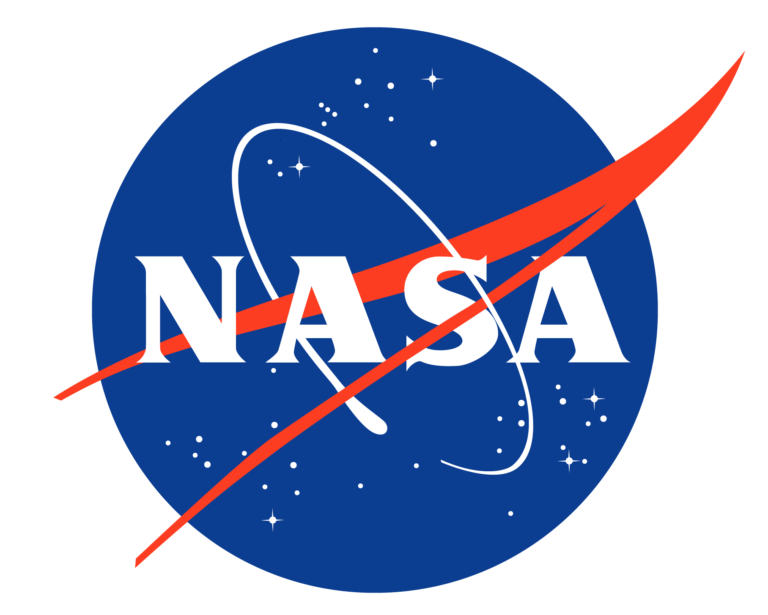Saturn can mesmerize even the most experienced telescopic observers. Like an illusionist, it can also trick the keenest of eyes into seeing things that aren’t really there, or make them appear in mysterious ways. That’s why I’d like you to turn to the ringed wonder this month to study the shape of the planet’s globe — and find out if you’re susceptible to a bizarre optical illusion that befuddled observers for about a century.
You’ll find Saturn shining with a steady yellow light just a few degrees northeast of 1st-magnitude Spica (Alpha [α] Virginis) in Virgo the Maiden. While even the smallest of telescopes will show its stunning rings tilted about 13° from our line of sight, you’ll need to employ magnifications of at least 150x or greater to see the globe well enough to detect the illusion.
Saturn’s globe appears “square-shouldered” in this depiction from Sir William Herschel’s observations April 18, 1805. Of it, Herschel penned, “The figure … is certainly different from the spheroidical figure of Jupiter. The curvature is greatest in a high latitude.” The phenomenon results from an optical trick. Stephen James O’Meara Collection
A mysterious figure
In an 1805 issue of the Philosophical Transactions of the Royal Society of London, Sir William Herschel set out to “prove that there is a singularity … which distinguishes the figure of Saturn from that of all the other planets.” He noted, “So far back as the year 1776 I perceived that the body of Saturn was not exactly round.” He went on to provide a string of supporting observations dating from April to June 1805. His April 19 observation explained best that the figure appeared “somewhat like a square or rather parallelogram, with the four corners rounded off deeply, but not so much as to bring it to a spheroid. I see it in perfection.”
In an 1805 issue of the Philosophical Transactions of the Royal Society of London, Sir William Herschel set out to “prove that there is a singularity … which distinguishes the figure of Saturn from that of all the other planets.” He noted, “So far back as the year 1776 I perceived that the body of Saturn was not exactly round.” He went on to provide a string of supporting observations dating from April to June 1805. His April 19 observation explained best that the figure appeared “somewhat like a square or rather parallelogram, with the four corners rounded off deeply, but not so much as to bring it to a spheroid. I see it in perfection.”
The next year, Herschel repeated the argument in the Philosophical Transactions, providing yet another string of incredible observations. In all, Herschel saw the phenomenon through a variety of instruments ranging from 6.2 to 49.5 inches in diameter and powers from 160x to 570x.
Old tricks?
Herschel’s “square-shouldered” figure, as the phenomenon became known, baffled astronomers well into the 19th century (including renowned German astronomer Johann Schröter, who also found the planet not perfectly spheroidal). But the axe came down sharply when fine micrometer measurements — made by Wilhelm Bessel in the years 1830–33 and independently by the Reverend Robert Main at Greenwich Observatory in 1848 — showed “beyond doubt that the form of the planet does not differ from that of the elliptic spheroid,” as the Council of the Royal Society pronounced in 1850. And it doesn’t.
Herschel’s “square-shouldered” figure, as the phenomenon became known, baffled astronomers well into the 19th century (including renowned German astronomer Johann Schröter, who also found the planet not perfectly spheroidal). But the axe came down sharply when fine micrometer measurements — made by Wilhelm Bessel in the years 1830–33 and independently by the Reverend Robert Main at Greenwich Observatory in 1848 — showed “beyond doubt that the form of the planet does not differ from that of the elliptic spheroid,” as the Council of the Royal Society pronounced in 1850. And it doesn’t.
Yet, despite these results, skilled observers continued to record the phenomenon. Most notably, these include Phillip Sidney Coolidge at Harvard College Observatory (but only on occasion) in 1855 and William Denning in England in 1880.
“But one might almost say that Saturn had tried that old trick once too often,” commented Arthur Francis O’Donel Alexander in his 1962 book, The Planet Saturn, because Denning was not deceived.
“But one might almost say that Saturn had tried that old trick once too often,” commented Arthur Francis O’Donel Alexander in his 1962 book, The Planet Saturn, because Denning was not deceived.
Instead, Denning proffered a simple explanation: “The singular figure is due to the contrasting effects of the belts. While the bright belt near the pole causes a very evident ‘shouldering’ out of the two limbs at its extremities, the dark belts at the pole and towards the equator act in a precisely contrary way. They apparently compress the planet where they come up to the limb.”
Interestingly, though, when Denning tried to get rid of the illusion by focusing his telescope carefully, he couldn’t! Can you? Have fun trying, and let me know how you do at someara@interpac.net.
Interestingly, though, when Denning tried to get rid of the illusion by focusing his telescope carefully, he couldn’t! Can you? Have fun trying, and let me know how you do at someara@interpac.net.


